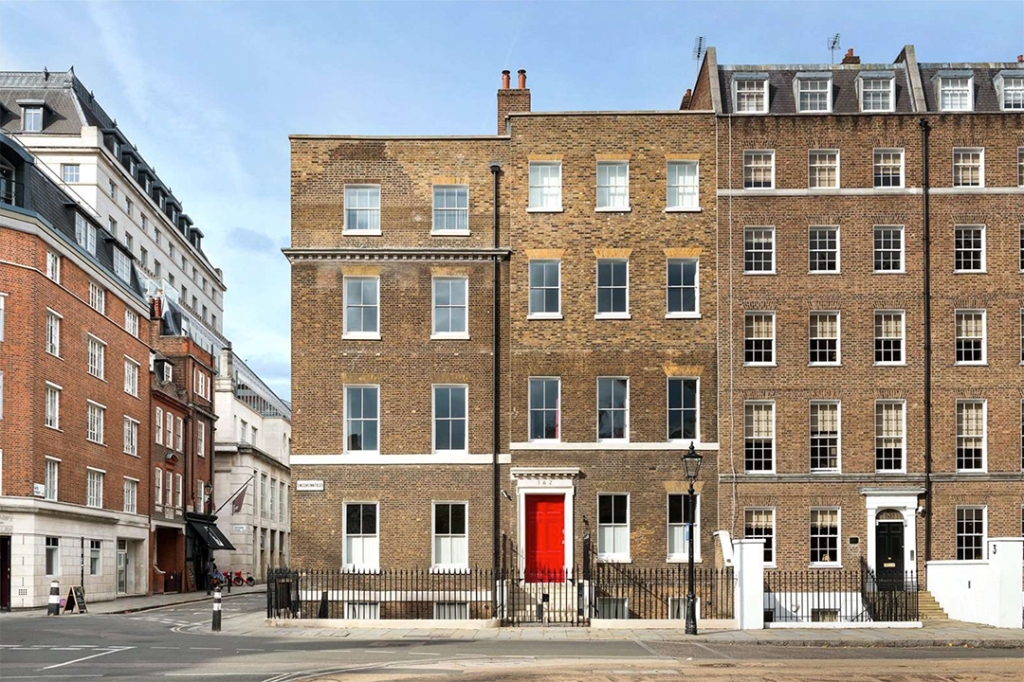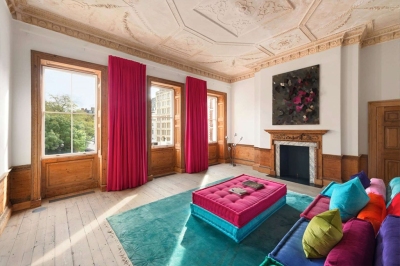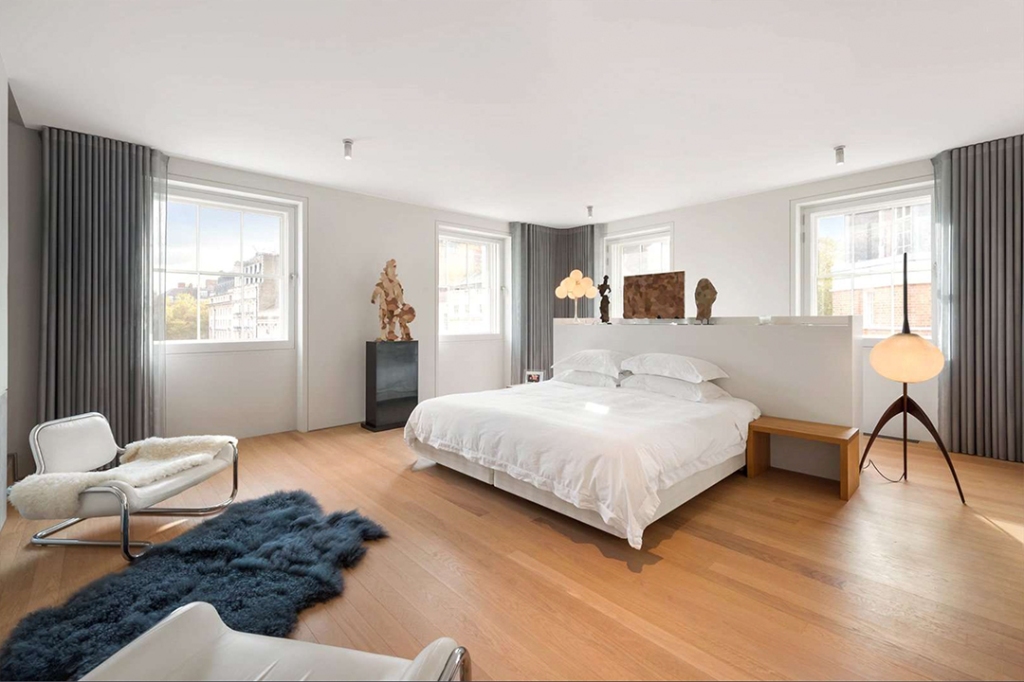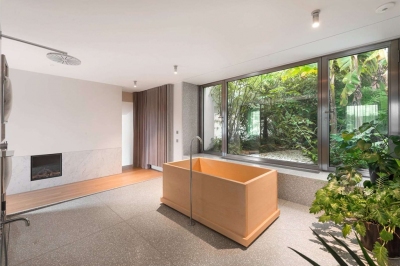 Exterior view of Anish Kapoor’s former residence in London, England. Photo Savills, via dirt.com
Exterior view of Anish Kapoor’s former residence in London, England. Photo Savills, via dirt.com
Mumbai-born British-Indian artist Sir Anish Kapoor—after a short stint in Israel where he studied electrical engineering, he moved to London in 1973 to study art and was knighted by Queen Elizabeth in 2013—is known for his elegant and enigmatic, sometimes brightly colored, and often monumentally scaled and abstractly biomorphic sculptures that frequently reflect, distort and re-contextualize the scenery around them.
Now 67 and one of the most influential sculptors of his generation, whose most prized works fetch millions at auction, Kapoor is probably best known in the United States for Chicago’s shimmering and sensually curvaceous Cloud Gate (2004), which is more commonly called “The Bean” due to its unmistakable bean-like shape. Some of his other seminal works include Sky Mirror (2006), Descension (2014), and the eerie tunnel-like epic Dirty Corner (2011) that’s installed in the manicured gardens at the Palace of Versailles, and which has several times been defaced with anti-Semitic graffiti.
The super-size success of the conceptual artist, married for the last handful of years to landscape designer Sophie Walker, allows him to own some spectacular homes around the globe, and his base in Central London, a bespoke mansion that overlooks Lincoln’s Inn Fields in the ancient Holborn district, has now come to market at £19 million, estimated at almost $26 million.
[Anish Kapoor to Convert 18th-Century Venetian Palazzo into Exhibition Space]
 Interior view of Anish Kapoor’s former residence in London, England. Photo Savills, via dirt.com
Interior view of Anish Kapoor’s former residence in London, England. Photo Savills, via dirt.com
Originally built as two separate residences, the unfussy and mostly unadorned brown brick-buildings were joined in the early 1800s, according to listings held by Nick Verdi of Savills. As reported by the listings website Mansion Global, Kapoor purchased the property in 2009 for about £3.6 million, or roughly $5 million. He soon engaged the acclaimed services of David Chipperfield Architects to convert what was then a down-on-its-heels five-story warren of offices into a substantial, showstopper single-family home.
At that time, an elevator was installed in a small addition at the rear of the house, and the top floor living spaces reconfigured to create a roof terrace. Ornate period details were carefully uncovered and preserved to mix freely with a decidedly modern, almost minimalist aesthetic throughout the residence that promo materials tout as “one of the largest homes in Central London.”
Only the fire-engine-red front door calls attention to the otherwise discreet Georgian-style residence that meanders across more than 14,500 square feet with a total of six (or more) bedrooms and seven bathrooms, plus three more powder rooms.
A quick scan over the floor plan shows there are at least a dozen fireplaces, some with antique mantelpieces and a few finished in an austerely contemporary fashion, and eight very sparely and colorfully furnished reception rooms that showcase a small number of artworks. There are five ample reception rooms, plus a more cozily proportioned den arranged around an atrium-style stair gallery on the ground floor. Two more reception rooms on the second floor are joined by a bookshelf-lined study, another small den, a 25-foot-long dining room, and a sleek kitchen arranged around two large center islands wrapped in strongly veined chocolate-brown marble.  Interior view of Anish Kapoor’s former residence in London, England. Photo Savills, via dirt.com The residence’s four principal bedrooms, each with at least one fireplace and all with a private bath, include a principal suite that encompasses the entire top floor.
Interior view of Anish Kapoor’s former residence in London, England. Photo Savills, via dirt.com The residence’s four principal bedrooms, each with at least one fireplace and all with a private bath, include a principal suite that encompasses the entire top floor.  Interior view of Anish Kapoor’s former residence in London, England. Photo Savills, via dirt.com
Interior view of Anish Kapoor’s former residence in London, England. Photo Savills, via dirt.com
The massive suite comprises a 42-foot-long bedroom/sitting room, a skylight-topped dressing room, and two massive bathrooms, one of them featuring a Japanese-style wooden soaking tub set against a wall of glass that looks out to a lush, densely planted roof garden designed by Walker.
Floor plans show there are two more en-suite bedrooms for guests or live-in domestic staff in the basement, which also includes the eighth reception room, a secondary kitchen, laundry facilities, and several storage vaults. Kapoor previously owned a home in London’s Chelsea district that was custom-designed by Tony Fretton Architects for him and his first wife, German-born art historian Susanne Spicale, and he’s long kept a significant toe-hold in the pink, sugary sands of the Bahamas where back in 2005 he commissioned avant-garde architect Rem Koolhaas and OMA to develop a couple of options for a striking home set on a high dune above the ocean on super-swank Harbour Island, though it does not seem either home was built. This story first appeared on dirt.com, which features additional photographs and information on the Central London residence.
Source link : https://www.artnews.com/art-news/news/anish-kapoor-central-london-home-1234604625












